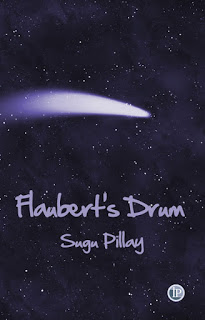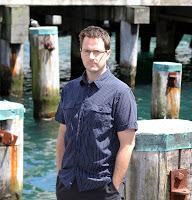Claire Browning is a former lawyer, author, editor and policy analyst, turned conservation advocate for Forest & Bird. She has also written regularly for blog site Punditon environment and conservation issues, and green politics. Beyond Today is her first book, although she’s been published on a number of previous occasions, as co-author of Adams on Criminal Law: Sentencing, and in law reform reports and law journal articles. Wairarapa-based, she is renovating a cottage, growing a food forest, and cultivating wildness in her garden.
How did you come to write Beyond Today: a values story?
Well … there’s a bit of a story there. I’d been blogging for a while on Pundit. Jeanette Fitzsimons was leaving Parliament, and I wanted to write a valedictory post – and to do that, I wanted to see the trajectory of her political career. Jeanette lent me her two Values Party manifestos: Blueprint for an Alternative Future from 1972, and Beyond Tomorrow (1975).
They were what I’d been looking for from the Greens: the key to the policy puzzle. And so, I wrote some blogs about Values, and about Green policy, nagging the Greens about their story. That’s where it started, and in the end, I wrote the story myself. The result is Beyond Today.
I worked hard to boil it all down to its essentials; to keep it short and clear and simple; to make it approachable; and beautiful enough to do justice to an amazing political story, and a compelling policy one. But so much more could be written, about the history of the Values Party, and the green movement, and the way forward.
If you don’t mind me asking, what led to your personal decision to join the Green Party?
It was a – I won’t say reluctant – but a cautious decision. I joined with a personal commitment not to participate in any of the party processes, as an inside observer, for research. I couldn’t find out what I needed to know or wanted to understand about the party, without a better sense of who its members were and how processes worked internally.
At the present time, my membership’s expired.
Beyond Today is in part a history of the Values Party, and in part your thoughts on the future of the Green Party. Was it always the intention to cover both these aspects, or did that combination develop as the book progressed?
It was always the intention to cover both – to take a perspective on the Greens by looking back at Values, to move policy and politics forward. But I want to correct this idea of the book as a “history” of Values. It isn’t, and it’s title – Beyond Today: a values story – is values with a little “v”.
It sketches out how the Values Party started, and some of the things that it achieved. I wanted to pay tribute to the Values movement, and say to the Greens: let’s celebrate being 40 years out in front. It’s a plea: don’t let that story get lost. The green movement was grounded in values, and values are what need to change. So I’m less interested in the history than the story for today: what being green really means, and why.
I wanted to challenge the Greens, too: to shake out a bit of the righteousness.
Given the often-tempestuous history of the Values Party, did you find that former Values Party members were keen to talk with you for this book?
I gather that a few more of them wanted to talk to me than I had realised! Perhaps it’s a consequence of the tempestuous relations and different perspectives that people wanted the opportunity to offer their own views.
In contrast to the Values Party (of which I was a member from 1977-1980), the Green Party seems for the most part to have maintained a high degree of unity, and when splits or potential splits have occurred, they seem to have been well managed. What do you think accounts for that contrast?
I think that the party has learned from its history. Its first co-leaders Jeanette and Rod were former Values members, as were others. But also, I suspect it’s been attained in large degree by simply muddling, as a party, along through the issues; I don’t mean by that to belittle anyone’s political management, or the care that’s probably from time to time gone into political management, but there’s been muddling, too, on policy in particular.
There’s always going to be a risk that in becoming more definitive, it’ll alienate some people. One description that resonated with me was of the party as a sort of Rorschach blot, on to which members, candidates, voters project their own perceptions, and their different (though not incompatible) priorities, and can rub along quite happily together for quite a long time, in a culture of respect and tolerance. But when it comes to a broader audience – and winning hearts, forever, not just a vote and power for a few years – I don’t know if that’s enough.
I may be wrong. But it became important to me to write the story down again, in 2012 not 1972 – to say what it is that green politics actually represents, not just a cleaner environment. By far the largest part of the challenge – and it’s the same challenge – is the economics.
In Beyond Today, you appear to be arguing that the Green Party would be better served by not being identified with the left of the political spectrum. Is that a fair statement of your position?
Yes. And I think there are both political reasons, and reasons in principle.
Values dismissed the politics of both the right and the left, and others share Tony Brunt’s hunch (Brunt was Values’ founder): that there are a lot of voters with a collection of values that coincide with the mix of policies that you would find, and have always found, in a green manifesto – voters who don’t and won’t identify with the left – because they aren’t intrinsically left-wing values. Green politics hasn’t tapped into that movement yet. It might be starting to.
In the end, I think you can express it very simply. This is not about two-dimensional opposition politics. It’s about all of us, and all of the kinds that it takes to make a world. It’s about supporting and demanding individual responsibility and freedom, just as much as supporting a strong social structure, and regulation to protect those without a voice in society: nature and the disenfranchised. And it will take all of us.
There are right wing values that are not admirable – they’re disastrous – but there’s ideology of the left that will see this project fail, if we can’t practise inclusion and diversity, instead of just talking about it.
In my view, our core problem as a species is that we are living beyond the planet’s means – we are using up the Earth’s natural capital faster than it can be replenished. I don’t think that it is possible to establish a global economic system that allows us to live within the planet’s means under capitalism, because capitalism depends on economic growth. Does the Green Party share that position, and if so, doesn’t that make the Greens an anti-capitalist party?
I think you need to ask a spokesperson for the Green Party! But the best response to that which I’ve seen to date, about a managed transition to something else – as yet undefined – would be Jeanette Fitzsimons’ on Pundit:
If you were designing a system to live within the limits of the planet and care for all its people you certainly wouldn’t start with capitalism. But given that’s what we have, and the only thing most people know, and change is desperately urgent, like in the next 5 years – what do you do with it? What happens to the corporates which currently deliver the goods and services we buy and in which many small people have invested their life savings? They aren’t going to just go away and there’s no appetite publicly for recolution and confiscation and nationalisation. I’m afraid that if we have to wait to change the whole economic system and grow a form of democratic eco-socialism that has never been tried anywhere let alone succeeded in leaving us a blueprint, we will still be designing it when the oceans close over our heads and food wars break out all over.
Of course it would be better to run society as a participatory, democratically controlled egalitarian economy that plans to meet human needs sustainably, but the big problem remains. What seem like the obvious priorities to us – quality food and shelter for everyone, products that last for ages and can be repaired, renewable energy, local production – just aren’t the priorities most people would choose. We assume a democratically controlled socialism would give us the answer we support – where is the evidence for that? And if the people, given all the facts, choose more shopping malls and one trip packaging and junk food and waste, because they have endured generations of advertising and corporate culture that inculcates those values – what then? and how likely are they to choose to limit their own consumption even more severely so that people in developing countries can get enough food and fresh water?
It was in the context of a discussion, and people might want to read the whole thing. I don’t think we know yet exactly how a functional green economy would look. The current relationship between the Green Party and the Labour Party is a curious mixture of cooperation and competition. To what extent do you think the two parties can – or should – find common ground? How about the Greens and other parties?
Yes, “hugging” or “mugging”? I was intrigued by Grant Robertson’s recent speech: the latest in a series of indicators that Labour, as it has always been, is quite attentive to the Greens’ approach, and green ideas. He gave the speech on June 28 – it’s a thoughtful speech – and like Beyond Today, it’s about values. Labour values, starting with the Labour constitution.
But Labour’s also missing, or not fully addressing, a very fundamental point, and I suspect this is a consequence of the point having been so obscured – the key point I try to tease out in Beyond Today. There won’t ever be common ground, until the economic paradigm of growth shifts. The environment part can’t be done, without the economic part. Anyone who says it can is lying.
There are parts of green thought that express both left and right wing ideals, which the politics chapter of Beyond Today explores a bit. And there are parts so incompatible with both that the ground is not common. It’s not common at all, in any sense: it’s not shared by anyone else yet, politically, and it’s an elusive, radical (transformational) thing.
I guess that means by definition, it can’t be the centre ground.
As someone who’s both an environmental activist and a poet, and who finds that the two roles don’t always fit neatly together, I am intrigued by your statement, echoing Paul Kingsnorth, that “we need the quants, and the poets, both” (p. 107). Who do you mean by “the quants”? And how can the poets help without losing their poetry, and turning into mere propagandists?
“The quants” is Kingsnorth’s term. It comes from a blogthat he wrote, I’ve quoted from it in the frontispiece of the book, and the whole thing is among my favourite blog reads.
My understanding of what he means by that term is: people – well-meaning people, politicians often, but not exclusively – who have lost sight of, or forgotten, or never understood what lay at the heart of green thought. People who are focused on making the $ and the carbon cuts (and the votes) add up; less focused, if at all, on confronting the whole economic paradigm, and confronting ourselves.
He rightly pinpoints the fact that we need a whole culture change, a total change of heart. And that one of the ways, perhaps the only way, to achieve that is by changing the stories we tell ourselves, about ourselves. Which is where the poets come in. The Club of Rome’s saying the same thing (the Club of Rome, a high-powered think tank, first published the Limits to Growth in 1972).
I’m both: quant and poet, both. Not, literally, a poet – but I analyse (law and policy, usually), and when I get tired of that, I dream. Perhaps that’s an uncomfortable mix in the book, I don’t know, nor care really. It is what it is, and how I wanted it to be. It’s the story, according to me.
Finally, are more books by Claire Browning on the way?
I kind of half-accidentally ended up writing this one, so… I think not. But you never know…
Book availability details
 st1\:*{behavior:url(#ieooui) } <![endif]–>
st1\:*{behavior:url(#ieooui) } <![endif]–> 






